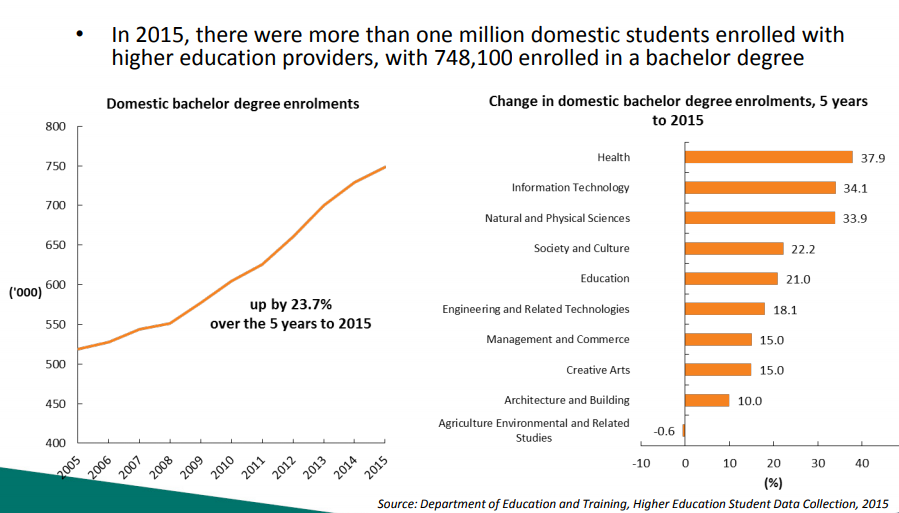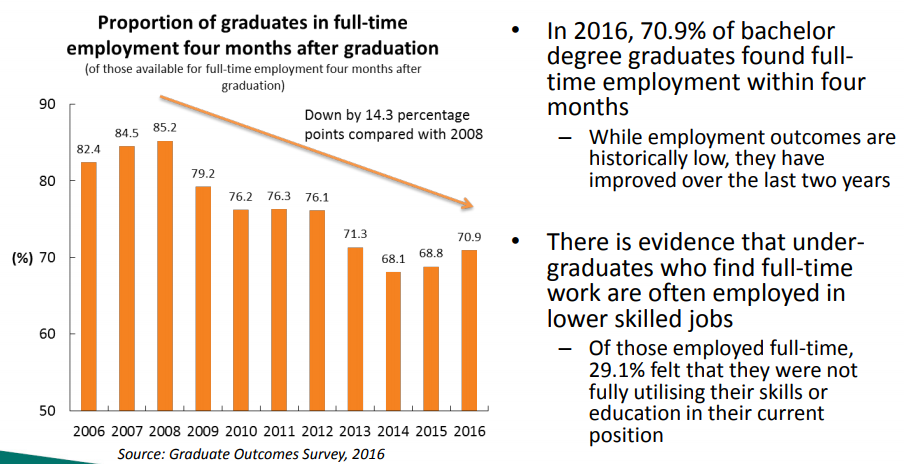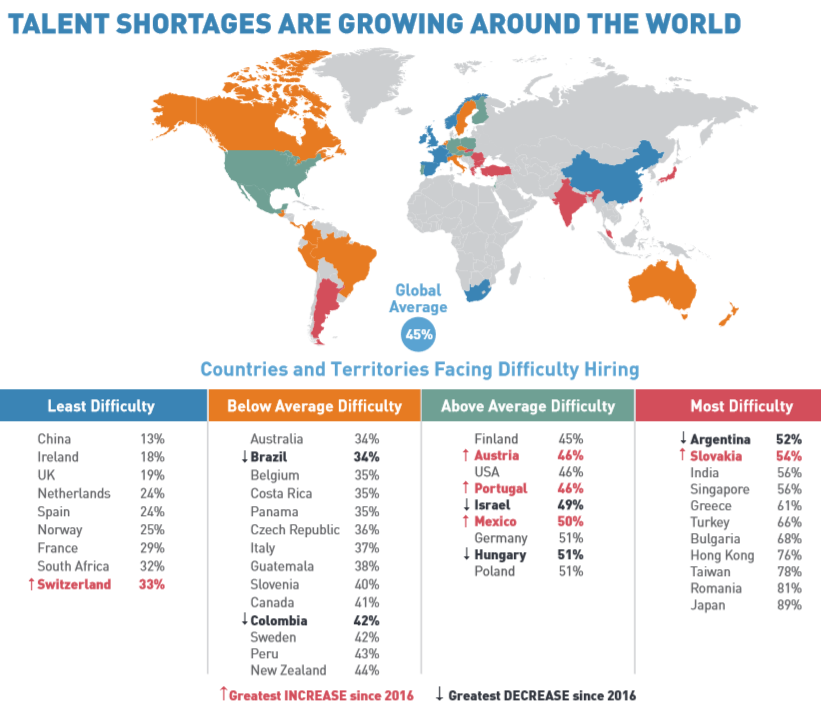The argument that Australia needs to maintain a turbo-charged skilled migrant intake (both permanent and temporary) to alleviate skills shortages was shot to pieces by the most recent Department of Employment skills shortages report, which showed that Australian skills shortages “continue to be limited in 2016-17”, and that there are a high number of applicants per job:

As well as a record number of Aussies studying at university:

Of whom many graduates cannot gain meaningful employment:

Global jobs site, Indeed, also released research showing that Australia’s so-called ‘skills shortages’ are among the lowest in the world, with a world leading rate of 70% of jobs being filled within one month.
Now, global recruitment site, Manpower, has released its 2018 Global Talent Shortage report, which shows that Australia’s skills shortages are well below the global average:

According to this survey, skills shortages had been consistently trending down in Australia since 2011 when 54% of all businesses were affected.
It’s, therefore, hard to take claims that Australia is suffering from widespread skills shortages seriously, especially when Australia’s labour underutilisation remains at elevated levels and wages growth is stuck near historical lows.
As explained by The Australia Institute’s chief economist, Richard Denniss, in April 2017, the very purpose of foreign worker visas is to “suppress wage growth by allowing employers to recruit from a global pool of labour to compete with Australian workers”. In a normal functioning labour market, “when demand for workers rises, employers would need to bid against each other for the available scarce talent”. But this mechanism has been bypassed by enabling employers to recruit labour globally. “It is only in recent years that the wage rises that accompany the normal functioning of the labour market have been rebranded as a ‘skills shortage'”.
Given the significant slack in the labour market, as well as the pressure that mass immigration is causing on house prices and infrastructure in the major cities, there is a strong case for normalising Australia’s net migrant intake back to the historical average of 70,000 from around 200,000 currently.
Wake up, Malcolm Turnbull:

